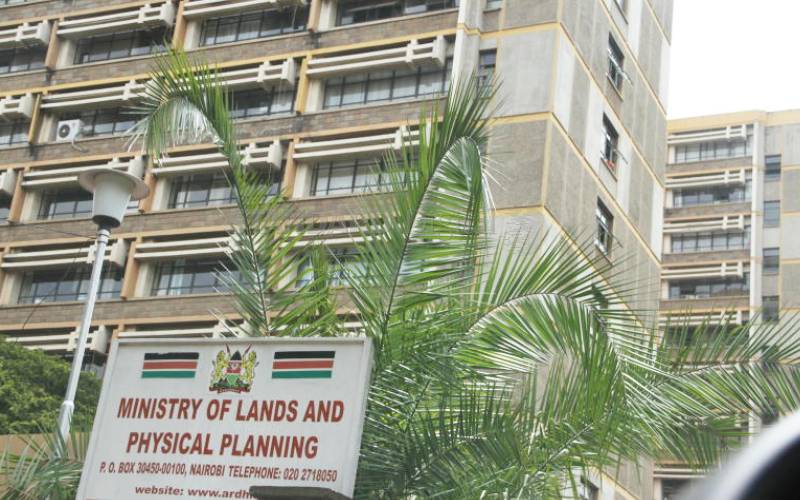
When a landowner presented a subdivision scheme for his five acres into plots measuring 40-by-48 foot, he was disappointed when his application was rejected. He had not anticipated any problems as he had made provisions for 20-foot access roads.
The county planning authority and Land Control Board insisted the plots be a minimum of 50-by-100 foot and each should be accessed by a 30-foot road.
The owner could not understand why the two institutions should control use of his land, which was freehold. This brings us to the question: Should county governments approve development on freehold land? One school of thought holds that owners of freehold land are free to develop it without “interference by planning authorities”.
Section 2 of the Land Act, 2012, defines freehold as the unlimited right to use and dispose of land subject to the rights of others and the regulatory powers vested in both levels governments. Freehold refers to ownership of land and property without limit of number of years. Freehold is the greatest interest in land and property a person can have and gives the owner absolute ownership.
The Constitution provides that all land (public community and private) belongs to the people Kenya. Freehold tenure is therefore not excluded from “being held, used and managed in an equitable, efficient, productive and sustainable manner”.
This, therefore, calls for development control to regulate the orderly planning and growth of urban and rural areas within a framework of prescribed standards in public interest to ensure there is safety, health, aesthetics, efficiency and harmony in the country.
Police power
Article 66 seeks to achieve by donating “police power” to the State to regulate the use of land in public interest. Police powers are exercised through national and county policies, statutes, by law, physical and land-use plans.
Unfortunately, nuisance law and private arrangements such as restrictive covenants may not and are often unable to deal with such effects. This necessitates some form of state regulation of the use of private property rights.
A zoning plan prepared and approved by a county government is a useful tool to control use of freehold land. It specifies permitted development, percentage area to be covered by buildings, distance buildings should be sited from the boundary of a road reserve, distance from the rear of buildings to the rear plot boundary, the number of floors permitted, permitted sizes and location of outdoor advertisements and external colour of buildings.
The Constitution, County Governments Act 2012 and Urban Areas and Cities Act 2011 mandate county governments to control development in their respective jurisdiction whether the land is under freehold, leasehold, public or community.
However, since most of the land is registered as freehold, how can county governments prevent ‘amoebic growth’ of urban areas and cities if they cannot control development on freehold land?
Change of use
The argument that planning authorities cannot control development on freehold land until the proprietor converts the prevailing tenure to leasehold is erroneous. Article 65 (1) provides that citizens cannot be deprived ownership of land under freehold tenure.
Section 42 of the Land Laws (Amendment) Act, 2016 stipulates that a planning authority cannot compel a developer to surrender freehold interest as a condition for approval of development. Clearly, county governments can control development on freehold land.
Parliament should consider amending Land Registrar of freehold land to include the use as prescribed in an approved physical development plan to provide that a proprietor whose development plans are at variance with apply for change of use.
Freehold land cannot be developed at the whims of personal preferences. That is why the State (national and county governments) exercises police powers under Article 66. Therefore, planning authorities at the national and county levels are not ‘bound to development control on freehold land. They should use zoning plans, county-specific policies and national standards to control development.
Further, the argument that land should be converted from freehold to leasehold for planning authorities to control development fails to resonate with the Constitution, planning law, planning theory and established practice.
Finally, development control on freehold land will ensure that “we the people of Kenya” bequeath future generations the environment contemplated under Article 60 and the Sessional Paper No. 3 of 2009 on the National Land Policy for–well planned and sustainable human settlements for posterity and prosperity.
If land use in areas under freehold tenure is not controlled, the Kenya Vision 2030 aspiration of ‘a newly industrialising, middle-income country providing a high quality of life to all its citizens in a clean and secure environment’ will remain a lofty pie in the sky.
The author is a registered physical planner
 The Standard Group Plc is a multi-media organization with investments in media
platforms spanning newspaper print operations, television, radio broadcasting,
digital and online services. The Standard Group is recognized as a leading
multi-media house in Kenya with a key influence in matters of national and
international interest.
The Standard Group Plc is a multi-media organization with investments in media
platforms spanning newspaper print operations, television, radio broadcasting,
digital and online services. The Standard Group is recognized as a leading
multi-media house in Kenya with a key influence in matters of national and
international interest.
 The Standard Group Plc is a multi-media organization with investments in media
platforms spanning newspaper print operations, television, radio broadcasting,
digital and online services. The Standard Group is recognized as a leading
multi-media house in Kenya with a key influence in matters of national and
international interest.
The Standard Group Plc is a multi-media organization with investments in media
platforms spanning newspaper print operations, television, radio broadcasting,
digital and online services. The Standard Group is recognized as a leading
multi-media house in Kenya with a key influence in matters of national and
international interest.










